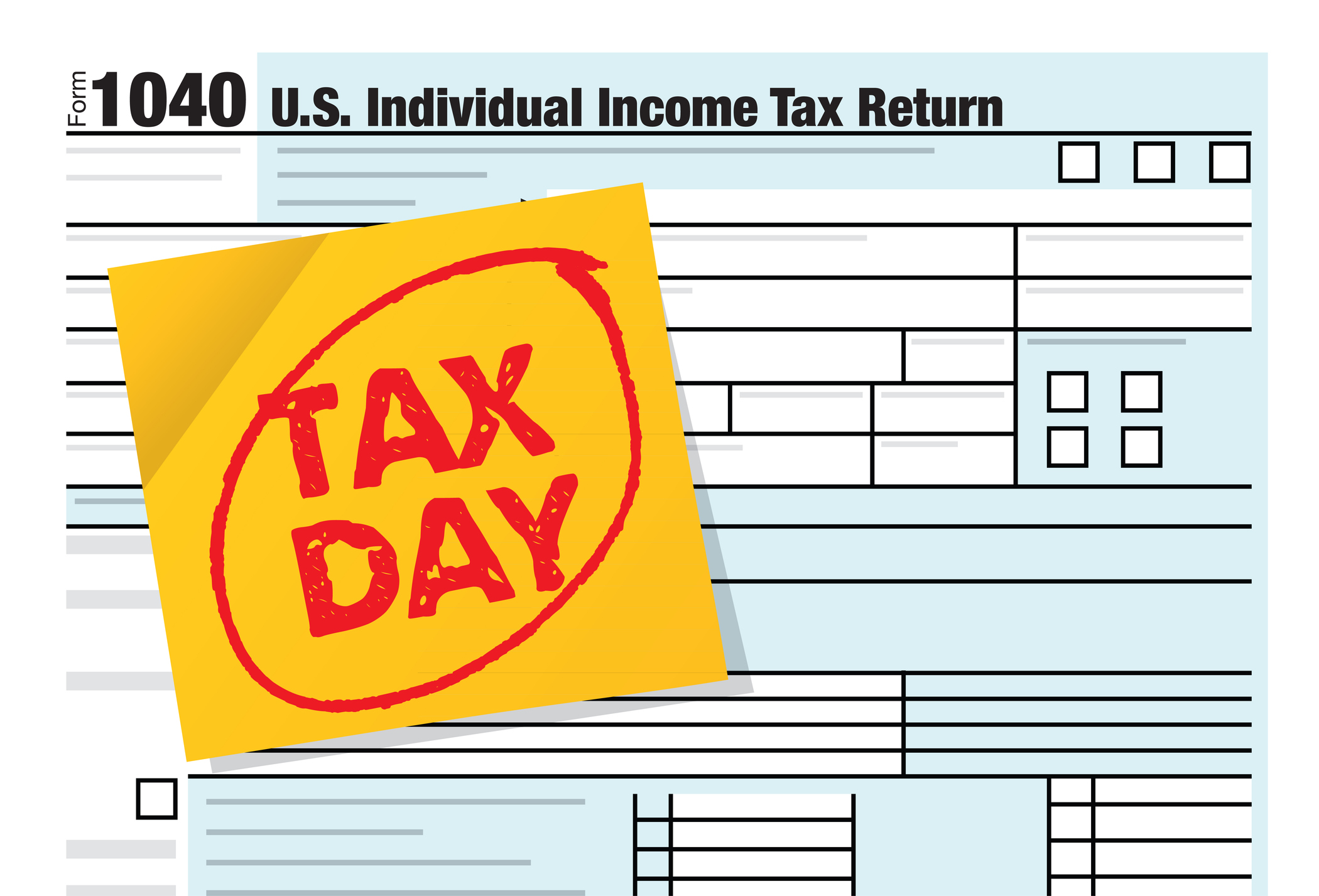Nine Tax Deadlines for April 15
Do you know about all the other tax deadlines that fall on April 15?


The April 15 federal income tax filing deadline is just around the corner, but it’s not the only one. Several other tax deadlines also fall on Tax Day. Missing some of these deadlines might cause you to lose out on tax savings, and not meeting others can result in financial penalties.
Here is what you need to know about other tax deadlines for April 15, 2025.
(Note: If you live in an affected area of a state with an IRS tax deadline extension due to severe storms and natural disasters, you may have a different federal tax filing due date.)
From just $107.88 $24.99 for Kiplinger Personal Finance
Become a smarter, better informed investor. Subscribe from just $107.88 $24.99, plus get up to 4 Special Issues

Sign up for Kiplinger’s Free Newsletters
Profit and prosper with the best of expert advice on investing, taxes, retirement, personal finance and more - straight to your e-mail.
Profit and prosper with the best of expert advice - straight to your e-mail.
Related: You May Have More Time to File if You Live in These States
1. Tax filing deadline

The 2024 federal income tax return filing deadline is April 15 this year. Failing to file your tax return by midnight on Tax Day could cost you a failure-to-file penalty, which is 5% of unpaid taxes for each month (or partial month) the tax return is late.
If you’ve missed your deadline and have a balance due, the IRS will send you a notice or a letter indicating you must pay the penalty fee.
That being said, if you are owed a tax refund, you don’t have to worry about this penalty. The IRS may also remove or reduce your penalties if you acted in good faith and can prove reasonable cause for being unable to meet your tax obligations on time. Some examples of valid reasons for failing to pay or file on time include:
- Inability to access records
- A natural disaster or civil disturbance
- Death, serious illness, or unavoidable absence of the taxpayer or immediate family
- System issues that delayed electronic filing or payment
Related: Key IRS Changes to Know Before You File
2. Deadline to file for a federal tax extension

If you don’t think you will make the April 15 filing deadline, make sure you file for a federal tax extension before Tax Day. Requesting an extension before the due date will save you from the failure-to-file penalty and give you until Oct.15 to file. There are two ways to request a tax extension.
- File Form 4868
- Submit an electronic payment and select Form 4868 as your payment type. (The IRS will automatically recognize this as a tax extension request.)
Regardless of which option you choose, your tax bill is still due by April 15 (more on that below).
Related: How to Get More Time to File Your Tax Return
3. Deadline to pay taxes

April 15 is also the deadline to pay the IRS federal taxes due, whether or not you requested a tax extension. If you haven’t filed yet, you might not know the exact amount you owe. However, the IRS won’t impose a late payment penalty if you pay at least 90% of your tax bill so you can estimate to some degree. Just remember that your unpaid taxes will continue to accrue interest and penalties until your bill is paid in full.
IRS payment plans: The IRS has several options for taxpayers who can’t pay their taxes in full, including payment plans. It’s important to pay the IRS or make arrangements to pay as soon as possible. Ignoring a tax bill can result in financial penalties, and in severe cases, the IRS could place a federal tax lien on your property, possibly seize certain assets, and garnish your wages.
Note: If you have a household employee, April 15 is also the deadline to pay employment taxes.
Related: How to Pay the IRS if You Owe Taxes
4. 2024 HSA contributions deadline

Although 2024 has ended, eligible taxpayers still have time to contribute to their health savings accounts (HSAs). That means you have until April 15, 2025, to make HSA contributions that apply to the prior tax year. Before you do, you might want to check your past contributions. Exceeding the HSA contribution limit comes with financial penalties.
- For 2024, you can contribute up to $4,150 for self-only coverage
- If you had family coverage, the contribution limit is $8,300
- People 55 and older can contribute an additional $1,000
Employer contributions also count toward contribution limits. So don’t forget to check those too.
5. 2024 IRA contribution deadline

As with the HSA deadline, taxpayers have until Tax Day to contribute to their traditional or Roth IRAs (individual retirement accounts) for 2024 tax purposes. While Roth IRA contributions are considered taxable income, making contributions could qualify some taxpayers for the Saver’s Credit. The credit is nonrefundable and is worth up to 50% of the first $2,000 ($4,000 for joint filers) you contribute to retirement accounts.
Traditional and Roth IRAs also come with contribution limits.
- You can contribute up to $7,000 to your 2024 traditional or Roth IRA
- Taxpayers age 50 and older can contribute up to $8,000
- The total contributions between all your IRAs count toward the annual contribution limit
You also have until April 15 to contribute to your employees’ SEP IRA accounts. Making contributions to this type of IRA may lower your tax liability. You can deduct up to 25% of employee compensation or the amount of your contributions, whichever is less.
6. Correct excess IRA contributions

If you accidentally contributed too much to your 2024 IRA (known as ineligible contributions), you still have time to correct the mistake. Withdrawing the excess contributions by April 15 will spare you from a 6% penalty. Thankfully, IRA contribution limits are higher for 2024 than they were last year. So it might make sense to apply the excess amount to this tax year instead.
7. Contribute to your solo 401(k) plan

Self-employed taxpayers have until April 15 to contribute to solo 401(k) accounts. Just make sure you don’t exceed these 2024 contribution limits if you choose to make additional contributions:
- $69,000 or 25% of your net adjusted self-employment income, whichever is less
- If you are making catch-up contributions and are 50 or older, you can contribute up to $76,500 or 25% of your net adjusted self-employment income, whichever is less
8. Make your first 2025 estimated tax payment

If you have taxable income but don’t have income taxes withheld from your paycheck, your first estimated tax payment for the 2025 tax year is due on April 15. Underpaying or failing to make the payment altogether could result in financial penalties. You can use Form 1040-ES to calculate your estimated tax payment.
Remember, there are two other estimated tax payments due in 2025. However, you can skip those if you pay all your 2025 estimated taxes by the April 15 deadline.
9. State tax deadlines

Most state income taxes are also due on April 15 this year. However, some states have later filing dates.
Additionally, some states granted tax extensions to eligible residents following natural disasters. For example, residents of impacted areas from California wildfires are eligible for an extended tax deadline, as well as certain IRS disaster-related tax breaks.
If you’ve lost your tax records during a natural disaster, you must recover your tax documents as soon as possible to be able to claim relief. Taxpayers should also check with their state's revenue department to see when taxes are due since states can impose late filing and payment penalties.
For more information, see Kiplinger's report on states with IRS tax deadline extensions.
Related Content
- Tax Tips for Last-Minute Filers
- When Are Estimated Tax Payments Due?
- When Are Taxes Due in 2025? Tax Deadlines by Month
Profit and prosper with the best of Kiplinger's advice on investing, taxes, retirement, personal finance and much more. Delivered daily. Enter your email in the box and click Sign Me Up.

Katelyn has more than 6 years of experience working in tax and finance. While she specialized in tax content while working at Kiplinger from 2023 to 2024, Katelyn has also written for digital publications on topics including insurance, retirement, and financial planning and had financial advice commissioned by national print publications. She believes knowledge is the key to success and enjoys providing content that educates and informs.
-
 States That Tax Social Security Benefits in 2026
States That Tax Social Security Benefits in 2026Retirement Tax Not all retirees who live in states that tax Social Security benefits have to pay state income taxes. Will your benefits be taxed?
-
 QUIZ: What Type Of Retirement Spender Are You?
QUIZ: What Type Of Retirement Spender Are You?Quiz What is your retirement spending style? Find out with this quick quiz.
-
 How to Avoid the Financial Quicksand of Early Retirement Losses
How to Avoid the Financial Quicksand of Early Retirement LossesSequence of returns — experiencing losses early on — can quickly deplete your savings, highlighting the need for strategies that prioritize income stability.
-
 States That Tax Social Security Benefits in 2026
States That Tax Social Security Benefits in 2026Retirement Tax Not all retirees who live in states that tax Social Security benefits have to pay state income taxes. Will your benefits be taxed?
-
 10 Cheapest Places to Live in Washington
10 Cheapest Places to Live in WashingtonProperty Tax Is Washington your go-to ski destination? These counties combine no income tax with the lowest property tax bills in the state.
-
 3 Major Changes to the Charitable Deduction for 2026
3 Major Changes to the Charitable Deduction for 2026Tax Breaks About 144 million Americans might qualify for the 2026 universal charity deduction, while high earners face new IRS limits. Here's what to know.
-
 Holiday Tax Scams 2025: 'Tis the Season to be Wary
Holiday Tax Scams 2025: 'Tis the Season to be WaryTax Scams Navigating tax tricks of the holiday season may be daunting, but don't let that destroy your festive spirit
-
 Retirees in These 7 States Could Pay Less Property Taxes Next Year
Retirees in These 7 States Could Pay Less Property Taxes Next YearState Taxes Retirement property tax bills could be up to 65% cheaper for some older adults in 2026. Do you qualify?
-
 Estate Tax Quiz: Can You Pass the Test on the 40% Federal Rate?
Estate Tax Quiz: Can You Pass the Test on the 40% Federal Rate?Quiz How well do you know the new 2026 IRS rules for wealth transfer and the specific tax brackets that affect your heirs? Let's find out!
-
 Law Reversal Looming? Trump Eyes 2026 Gambling Winnings Tax Change
Law Reversal Looming? Trump Eyes 2026 Gambling Winnings Tax ChangeTax Deductions It's no secret that the IRS is coming after your gambling winnings in 2026. But how long will that last?
-
 5 Types of Gifts the IRS Won’t Tax: Even If They’re Big
5 Types of Gifts the IRS Won’t Tax: Even If They’re BigGift Tax Several categories of gifts don’t count toward annual gift tax limits. Here's what you need to know.